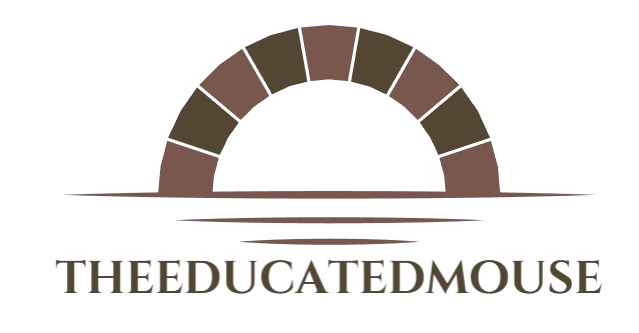In a world that moves faster every day, students need more than rote memorization to thrive—whether they’re navigating high school coursework, university lectures, or self-directed study. Effective learning is an evolving craft, requiring a toolbox of techniques that adapt to changing subjects, deadlines, and personal rhythms. Below is a reader-friendly guide to modern study strategies that boost understanding, sharpen retention, and transform occasional cramming into steady, lifelong mastery.
Rethinking How You Learn
It’s easy to default to re-reading chapters or highlighting passages. While these methods offer some benefit, they rarely penetrate deeply. To truly absorb material:

- Mix and Match: Blend reading with other tactics—active recall, spaced repetition, teaching peers, or visual mapping.
- Audit Your Habits: Every few weeks, ask yourself: Which strategies spark genuine progress? Ditch what feels hollow and double down on what clicks.
Time Management: Your Secret Weapon
Even the best techniques falter without structure. A clear schedule tames overwhelming workloads and preserves mental energy.
- Prioritize Ruthlessly
Identify the most impactful tasks—drafting an essay outline, tackling tough problem sets—then tackle them when you’re most alert. - Chunk It Down
Transform monster assignments into bite-sized steps. Instead of “study biology,” try “review chapter on cellular respiration” for 25 minutes. - Designate a Study Sanctuary
A clutter-free desk, comfortable chair, and minimal noise set the stage for focused work. Keep supplies handy and distractions out of sight.

Engage Your Senses: Visual Aids and Mind Maps
Turning abstract ideas into pictures or diagrams cements them in memory.
- Mind Maps: Start with a central concept and branch out subtopics in bubbles. The web-like structure mirrors how the brain organizes information.
- Sketch It Out: Simple drawings, flowcharts, or timelines can turn dense descriptions into digestible graphics.
- Color Code: Use consistent hues for themes—blue for definitions, green for dates, red for formulas—to build visual associations.

The “Ask–Explain–Visualize” Trilogy
Deep learning demands more than passive absorption. This three-step loop ignites critical thinking:
- Ask Questions
Probe your material: “Why does this principle hold true?” or “How does this theorem apply in real life?” - Explain Aloud
Teach the concept to a friend—or even to an empty room. Putting ideas into your own words highlights gaps and reinforces clarity. - Visualize Internally
Close your eyes and imagine the process or story. Creating a mental movie helps you recall details when they matter most.

Discovering Your Personal Winning Formula
No single method works for every learner. Crafting your bespoke routine takes patience and experimentation:
- Trial Periods: Commit to a new technique for two or three weeks before evaluating its impact.
- Regular Check-Ins: Keep a brief journal or digital log of what methods you used, what felt effective, and what needs tweaking.
- Stay Flexible: If flashcards feel stale halfway through the semester, switch to peer-led study sessions or quick quizzes.

Note-Making That Works
Well-crafted notes are your personal roadmap through complex subjects.
- Condense Concepts: Capture key ideas in short phrases rather than copying lectures verbatim.
- Invent a System: Develop simple symbols (▶ for actions, * for definitions, ? for questions) to mark important points.
- Revisit and Refine: Schedule weekly “note refresh” sessions to clarify fuzzy sections and integrate new insights.

Embracing Technology: Learning Apps and Online Tools
Educational apps can transform passive scrolling into active study.
- Choose Wisely: Platforms like flashcard apps, language-learning tools, or interactive problem sets can reinforce specific skills.
- Interactive Features: Seek out apps with built-in quizzes, progress tracking, and peer discussion boards.
- Balance Digital and Analog: Don’t let screen time replace face-to-face explanation or handwritten sketches. Use technology to complement, not replace, hands-on methods.

Project-Based Learning: Real-World Application
Nothing cements knowledge like applying it to a tangible challenge.
- Select Meaningful Projects: Build a small website to practice coding concepts, create a short documentary to explore history topics, or design a mini experiment to test scientific hypotheses.
- Develop Essential Skills: Projects hone research, problem-solving, communication, and collaboration—competencies prized in any career.
- Reflect on Outcomes: After completion, jot down what worked, what failed, and what you’d change next time.

From Cramming to Consistency: Spaced Repetition & Active Recall
Late-night marathon sessions are notorious for fleeting results. Instead:
- Spaced Repetition: Spread study sessions across days or weeks, revisiting material just as you begin to forget it. This leverages the brain’s spacing effect for durable memory.
- Active Recall: Test yourself regularly—close books and write, speak, or sketch answers from memory. Forced retrieval forges stronger neural links than passive review.

Bringing It All Together: A Sample Study Blueprint
| Time | Activity | Benefit |
|---|---|---|
| Morning | Light exercise + healthy breakfast | Energizes body and fuels brain |
| Late Morning | 25-minute focused study (Pomodoro) | Sharp attention, built-in breaks |
| Midday | Flashcard review + self-quiz | Active recall and spaced rehearsal |
| Afternoon | Project work or group discussion | Practical application and peer learning |
| Early Evening | Quick mental puzzle or language app session | Novelty and brain stimulation |
| Night | Review notes, ask–explain–visualize cycle | Consolidation and concept mastery |
| Pre-bedtime | Screen-free wind-down (reading or journaling) | Prepares mind for restorative sleep |
Final Thoughts
Mastering learning is a dynamic journey, not a fixed destination. By blending proven strategies—time management, visual mapping, deep questioning, technology, and consistent review—you’ll transform study from a chore into an empowering practice. Remember: the brain rewards effort with stronger connections, and small, well-chosen habits compound into big gains over time. Keep experimenting, stay curious, and let these techniques unlock your full academic potential.





